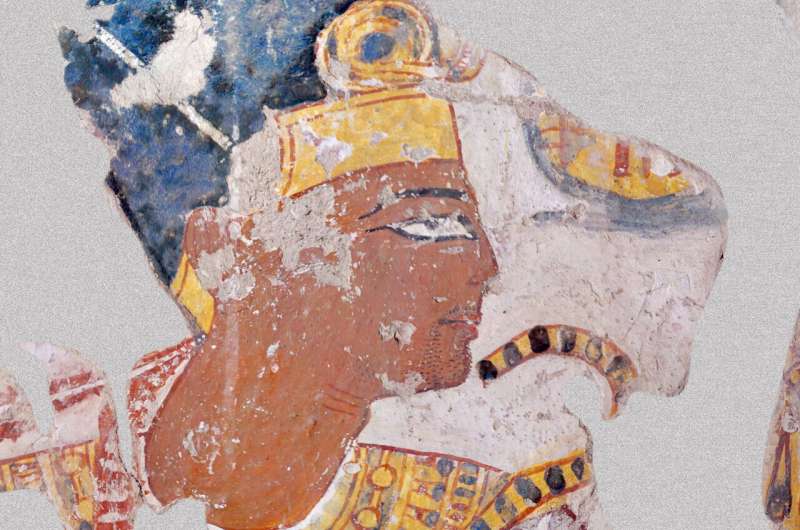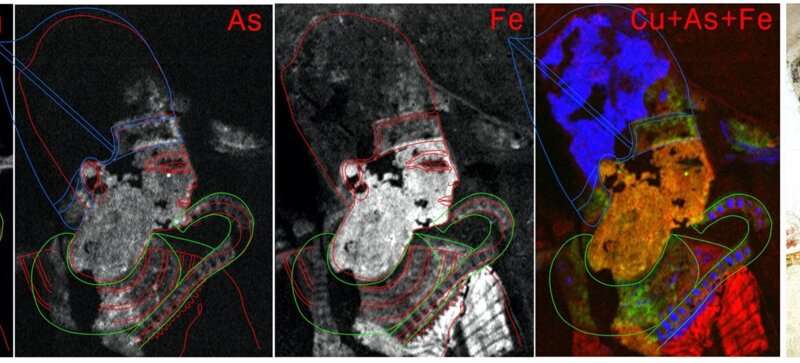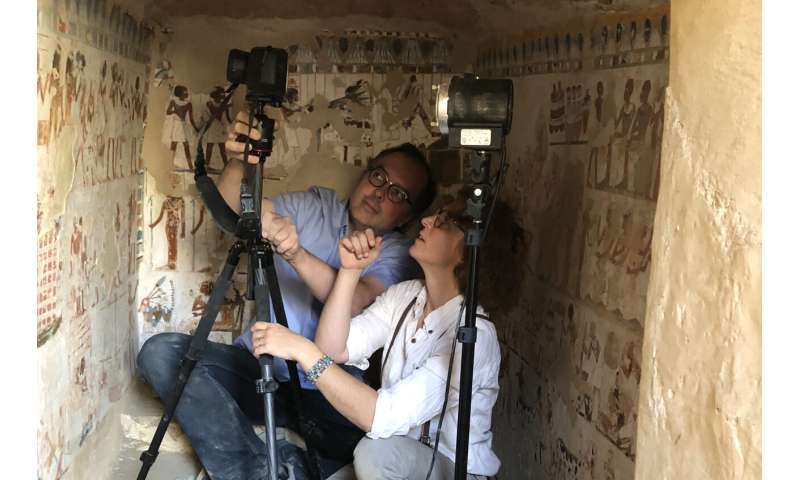This article has been reviewed according to Science X's editorial process and policies. Editors have highlighted the following attributes while ensuring the content's credibility:
fact-checked
peer-reviewed publication
trusted source
proofread
Hidden details of Egyptian paintings revealed by chemical imaging

Portable chemical imaging technology can reveal hidden details in ancient Egyptian paintings, according to a study published July 12, 2023 in the open-access journal PLOS ONE by Philippe Martinez of Sorbonne University, France in collaboration with colleagues at the University of Liège, Belgium.
Ancient Egyptian paintings are commonly thought to be the result of highly formalized workflows that produced skilled works of art. However, most studies of these paintings and the process that created them take place in museums or laboratories.
In this study, Martinez and colleagues use portable devices to perform chemical imaging on paintings in their original context, allowing for analysis of paint composition and layering and for the identification of alterations made to ancient paintings.
Two paintings were analyzed in detail, both located in tomb chapels in the Theban Necropolis near the River Nile, dating to the Ramesside Period. On the first painting, researchers were able to identify alterations made to the position of a figure's arm, though the reason for this relatively small change is uncertain.
On the second painting, analysis uncovered numerous adjustments to the crown and other royal items depicted on a portrait of Ramesses II, a series of changes that most likely relate to some change in symbolic meaning over time.
-

MA-XRF study of the painting of Ramesses II. Credit: Martinez et al., 2023, PLOS ONE, CC-BY 4.0 (creativecommons.org/licenses/by/4.0/) -

Philippe Walter and Catherine Defeyt taking measurements in the Noble Valley in Luxor (Egypt) using the portable scientific device. Credit: David Strivay, University of Liege, CC-BY 4.0 (creativecommons.org/licenses/by/4.0/)
Such alterations to paintings are thought to be rare among such art, but the researchers suggest that these discoveries call for further investigation. Many uncertainties remain about the reasoning and the timing behind the alterations observed, some of which might be resolved by future analysis. This study also serves to prove the utility of portable chemical imaging technology for studying ancient paintings in-situ.
The authors add, "These discoveries clearly call for a systematized and closer inspection of paintings in Egypt using physicochemical characterization."
More information: Philippe Martinez et al, Hidden mysteries in ancient Egyptian paintings from the Theban Necropolis observed by in-situ XRF mapping, PLOS ONE (2023). DOI: 10.1371/journal.pone.0287647
Journal information: PLoS ONE
Provided by Public Library of Science




















